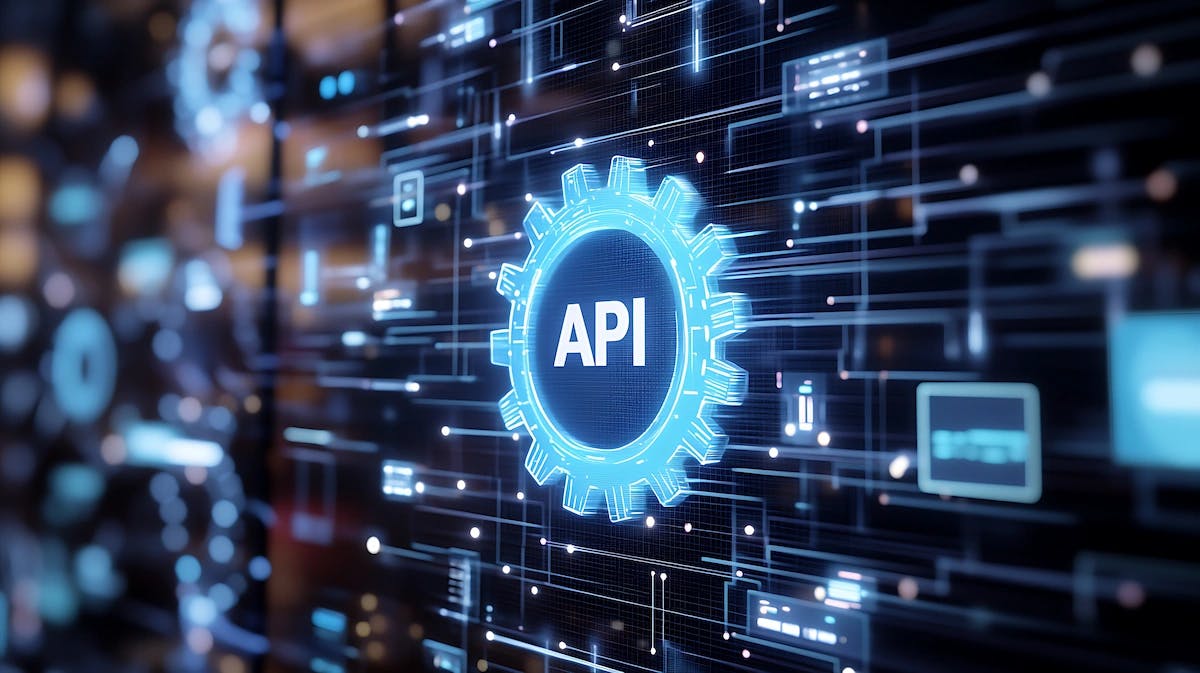
,
The world is moved by AI’s rise and utility, and businesses are acting to capitalize on these implications to gain an advantage in the long run. To implement AI tools in your business, understanding customer behaviour is crucial, as it informs decision-making, optimizes campaigns and enhances personalised experiences across various channels. Every business is keen to reap AI's benefits to elevate their performance and outperform their rivals. Even the marketing industry has desired to implement such tools to smoothen its operations and functions. These AI marketing tools make the automation and operation processes active, efficient, and intelligent.
These AI marketing tools need the support of APIs, which serve as digital intermediaries facilitating smooth communication between various software tools, enabling developers and marketers to automate marketing efforts. Be it creating and running an ad, managing operational processes, optimizing and strategizing content for better reach, or performing analysis across multiple marketing platforms, marketing API integration becomes necessary for modern marketing strategies.
What is API Integration?
API integration connects applications, systems, or services through Application Programming Interfaces (APIs) to enable data exchange, functionality, and communication. This integration allows businesses to leverage the capabilities of multiple systems, services, or applications, creating a perfect and integrated experience for their customers, employees, or partners. With API integration, companies can streamline operations, enhance customer relationship management, and improve efficiency.
“API integration involves using APIs to connect various systems, applications, or services, enabling them to communicate and exchange data in a standardized manner.”
This process allows businesses to access data, functionality, or services from multiple sources, creating a unified and cohesive experience. Organizations can automate workflows, enhance data accuracy, and improve integration.
Now, imagine if there was an API integration guide that could have made things easier for people to guide them. The next part will discuss how this handbook helps you understand API management and integration.
Importance of API Integration Guide in Business
API integration guide is crucial for businesses as enterprises can follow a manual that enables them to:
- Enhance Customer Experience
Businesses can improve customer satisfaction and loyalty by providing a seamless and integrated experience across multiple channels and systems. - Improve Operational Efficiency
Automating business processes and reducing manual errors through API integration can save significant time and cost. - Increase Revenue
Leveraging the capabilities of multiple systems and services can open up new revenue streams and enhance existing ones. - Gain a Competitive Advantage
Providing innovative and integrated solutions to customers can set a business apart. - Personalize Customer Interactions
By integrating data from various sources, businesses can offer personalized and relevant experiences to their target audience, improving customer engagement and satisfaction.
How Marketing Tools APIs Streamline Your Workflow
As essential components of modern marketing technology, Marketing APIs streamline processes and enhance data integration across platforms. These APIs facilitate real-time analytics and automation, allowing businesses to optimize their strategies. This overview will explore the various marketing APIs and their unique organisational benefits.
Examples of Marketing APIs
- Email Marketing APIs
Email Marketing APIs facilitate A/B testing, allowing marketers to identify the most effective elements for specific audience segments. This capability helps optimize email campaigns, improving engagement rates and ensuring messages resonate with targeted recipients. - Social Media APIs
Social Media APIs, such as the Facebook API, enable applications to interact with content directly without redirecting users. This functionality enhances user experience by allowing seamless engagement with social media platforms while keeping users within the application. - Meta’s Marketing API
Meta’s Marketing API is an HTTP-based interface for programmatic ad management and data queries. It allows businesses to automate their advertising processes, manage campaigns efficiently, and access valuable insights to optimize their marketing strategies. - Media Marketing APIs
These APIs are designed to enhance marketing strategies on social media. They facilitate creative production, campaign optimization, and influencer collaborations, automating processes and improving overall effectiveness in marketing efforts across multiple media platforms. - Travel APIs
Travel APIs provide real-time access to essential information about flights, hotels, and attractions, enabling companies to enhance customer experiences. By integrating these APIs, businesses can offer up-to-date travel options and streamline booking processes for their users. - Social Media Management APIs
Social Media Management APIs offer capabilities for scheduling and managing posts efficiently for businesses and agencies. These APIs often include additional tools like analytics and content creation assistance to enhance the overall user experience in social media management.
How Marketing APIs Can Boost Your Marketing Strategy
Utilizing APIs that can be divulged for marketing system integration is a catalyst that can change the entire traditional marketing ritual from gaining data insights, content marketing and management, social media analytics and best practices, performance metrics, etc. Below are some factors explaining why these key elements work in sync due to this marketing API integration.
- Efficiency and Time-Saving
APIs play a crucial role in automating repetitive processes, which allows teams to redirect their focus from mundane manual tasks to more strategic and creative work. By reducing the time spent on administrative functions, organizations can enhance productivity, foster ingenuity, and allocate resources more effectively to initiatives that drive growth and competitive advantage. - Data Integration
APIs provide a powerful means of seamlessly integrating data from various platforms, enabling organizations to create a unified and comprehensive view of their marketing efforts. This integration eliminates data silos and enhances collaboration across teams, allowing for better-informed decision-making. As a result, businesses can derive deeper insights and develop more cohesive strategies that align with their goals. - Real-Time Analytics
By implementing APIs, businesses access real-time analytics that offers immediate campaign performance and customer behaviour feedback. This capability empowers teams to make agile decisions based on live data, ensuring they can quickly respond to market changes and optimize their strategies. Machine learning enables these systems to analyze data, identify patterns, and improve decision-making processes efficiently, ultimately transforming their respective domains. As a result, organizations can improve their return on investment (ROI) and enhance overall effectiveness. - Scale and Flexibility
APIs allow businesses to adapt rapidly to changing market conditions and scale operations without requiring extensive infrastructure overhauls. This adaptability is essential for maintaining competitiveness in dynamic environments. By leveraging APIs, organizations can easily implement new features and services, ensuring they remain responsive to customer needs and industry trends.
Prominent API Integration Tools and Platforms
Several tools and platforms stand out for their capabilities and features regarding marketing API integration. Here are some of the most prominent options:
- Zapier
This platform allows users to connect various applications and automate workflows without extensive coding knowledge. It supports numerous marketing APIs, making it easy to streamline processes like lead generation and email marketing. - Segment
A customer data platform that helps businesses collect, unify, and activate customer data across multiple marketing channels. Segment integrates with various marketing APIs to enhance data-driven decision-making. - MuleSoft
Known for its robust API management capabilities, MuleSoft enables organizations to connect applications, data, and devices seamlessly. It supports marketing APIs, allowing efficient data flow and integration across marketing tools. - Postman
While primarily a tool for API development and testing, Postman also offers features that facilitate the integration of marketing APIs. It allows marketers to explore and interact with APIs, ensuring they can effectively utilize them in their campaigns. - HubSpot API
HubSpot provides a comprehensive API that allows businesses to integrate their marketing efforts with CRM functionalities. This API supports various marketing tasks, including email marketing, lead management, and analytics. - Google Analytics API
This API enables marketers to access and analyze their website traffic data programmatically. By integrating it with other marketing tools, businesses can gain deeper insights into user behaviour and campaign performance. - Sales Engagement Platform
A sales engagement platform streamlines sales processes and enhances communication through automation tools. Features include AI-driven email responses, chatbots for personalized interaction, and integration with CRM systems to manage workflows and improve lead conversion rates.
These tools and platforms enhance marketing operations' efficiency and empower businesses to leverage data and automation for improved customer engagement and revenue growth.
Looking for Implementation of Marketing AI Agents?
Why API Strategy and Planning Matter for Your Business
What is an API Strategy?
An API strategy is a comprehensive business plan to use and manage APIs effectively. It aligns the development and use of APIs with the overarching goals and objectives of the business, considering factors such as security, monetization, scalability, and continuous improvement. A well-defined API strategy includes considerations for the developer.
5 Key Steps for Successful API Integration in Marketing Strategy
Achieving successful API integration best practices involves an approach that is systematic in itself and encompasses several critical steps. A well-planned process is defined and designed for thorough documentation, where each phase ensures efficient API integration, which is reliable and scalable. By following these key steps, organizations can enhance their API integration processes and maximize their effectiveness.
- Planning and Design
Develop a detailed design that outlines how the API integration best practices will work and operate. Define endpoints, data formats (JSON or XML), authentication methods, and any necessary protocols. - Implementation
Start with simple requests and write code to handle API responses. Ensure the integration is modular, separating different functionalities into distinct functions for easier maintenance. - Error Handling
Implement appropriate error handlers by checking the status of API response codes. This ensures that issues are addressed promptly. - Versioning and Updates
Maintain backward compatibility with clear versioning strategies. Transition to newer API versions as they are released to avoid issues when older versions are deprecated. - Documentation
Provide comprehensive documentation detailing integration functionalities, authentication processes, and rate limits. This will help future development teams understand the integration and troubleshoot problems effectively.
Best Practices for AI Marketing Tools Integration
Integrating APIs requires a strategic approach to ensure the process is efficient and effective. By following best practices, organizations can define their integration needs, select the right platforms, maintain data quality, implement robust testing, and monitor API performance in marketing strategies.
This foundational work is essential for achieving seamless connectivity and maximizing the benefits of API integration best practices.
- Define Your Needs
Identify integration needs, create measurable goals, and outline steps to achieve them. Determine what functionalities the APIs should accomplish, such as payment systems or automated email sending.
Consider the challenges and key components of the integration process, such as data mapping, middleware solutions, and the importance of thorough testing and change management. - Platform Selection
Choose a scalable, secure API integration platform that supports necessary APIs and future needs. If integrating on-premises applications, consider an on-premises solution; for hybrid or cloud-based scenarios, leverage cloud integration solutions. - Data Quality
Implement processes to ensure data quality and consistency by cleaning and validating data before integration. This step is crucial for maintaining accurate insights. - Testing and Validation
Conduct thorough testing using real-world scenarios to validate integration performance. Utilise testing environments to simulate conditions before going live. - Ongoing Monitoring
Implement tracking and optimisation strategies to ensure long-term integration success. Use real-time visibility and analytics platforms to identify and address issues quickly.
Conclusion
By following these API integration best practices and steps, businesses can achieve precise marketing API integrations that enhance efficiency and effectiveness. Proper planning and monitoring API performance in marketing-related activities, adherence to security measures, and collecting the integration efficiency metrics will all ensure that marketing efforts remain agile and data-driven. Embracing the power of marketing APIs streamlines operations and positions businesses to respond swiftly to market dynamics and customer needs.
This guide to effectively implementing marketing APIs can come in handy when your marketing objectives are in focus. Implementing a well-defined strategy is the cornerstone of every major decision-making process for an enterprise. If you have the concepts that can be part of a major overhaul but are hesitant to approach this new venture, we at Codiste have a team of enthusiasts ready to implement strategic and pragmatic decisions to help you evolve and compete. Ready to collaborate, connect with us today.



What is Agentic AI? A Beginner's Guide to the Future of Software Development
Know more
AI in Customer Service: Trends & Predictions for 2025
Know more
A Deep Dive into How Agentic RAG Automates Data Retrieval and Analysis
Know more
